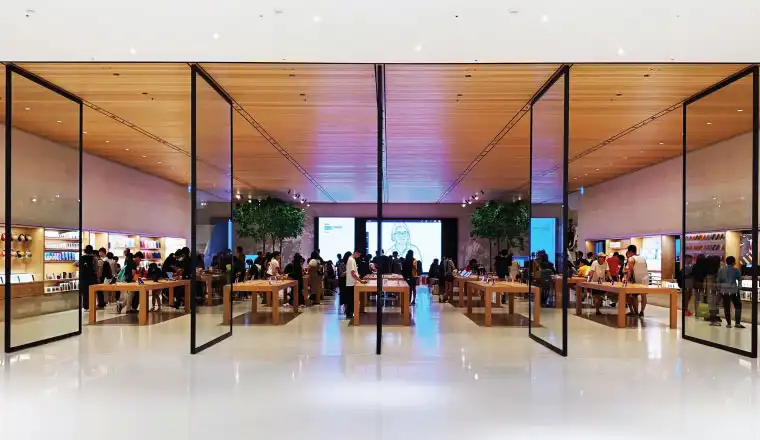Trade Dress: An Introduction

Table of Contents
What is Trade Dress?
By definition, it is exactly what it implies. It refers to how brand owners choose to ‘dress’ their final product before it hits the market, by controlling design elements like their products’ size, shape, and color. A lot of thought goes into conceptualizing these elements because brands have realized that it helps consumers distinguish and recognize their favorite brands between an endless selection of almost identical products. Imagine skimming through the shampoo aisle for your favorite brand. Most of the time, you’d be able to visually identify what you’re looking for by its shape, size, and color.
The Basics: Trade Dress Vs. Design Patent
Trade dress rights are often confused with design patents. We’ve often encountered brand owners seeking to ‘trademark’ their products in its entire physical form or ‘patent’ a sneaker collection. To understand how to lawfully protect your trade dress rights, we must first touch upon a few key guidelines regarding its elements. This is to ensure that in actuality, your product requires trade dress enforcement, rather than a design patent:
- Trade dress is strictly limited to the promotional and visual aspects of a product i.e. packaging.
- It must never serve as a functional part of the product i.e. the buttons on your ‘smart remote control’ will not be protected, while the smart- remote’s unique design, shape, and color would be eligible for trade dress protection.
- Good to know: Functional elements of a product can be protected but by design patents, under patent law.
Trade Dress Done Right
It comes with more benefits than what meets the eye. Not only does it serve as overall protection for your IP, but it also plays a very effective role in your overall brand protection strategy. But it is not as easy as it sounds. Transforming simple elements of your product such as color or size into a globally recognized trade dress requires endless research, development, and time. In other words, it is expensive.
But not too expensive for the below list of brands (trade dress example) who were visibly able to harness the power of trade dress.
In our humble opinion, trade dress rights are one of the most overlooked concepts of trademark law. So, we’ve compiled a quick introduction to serve insight on what trade dress is (and isn’t), why they matter to both aspiring and big brands, and who got it right.
Christian Louboutin’s Iconic Red Sole
We refer to the ‘red sole’ as iconic not only because it crowned Louboutin as the first shoe-designer in history to transform a visual element into global fashion culture but also due to the infinite debates it has sparked within the global IP community. It all started in the early nineties when equally renowned fashion house Yves Saint-Laurent released a shoe line with notable similarities to Louboutin’s design. It is now safe to say that YSL’s shoe line left the boutique’s display shelves sooner than the period they were intended to stay for.
Apple’s Tech Sanctuary aka Apple Retail Stores
Apple has gone through great lengths to ensure its brand identity is consistent (and obviously protected) and that goes beyond its’ actual line of products. Next time you find yourself in an Apple store, look out for the thoughtfully designed interiors that include patented architectural glass panels and floating glass-like staircases. It can be seen through the stainless-steel exteriors and the light-birch colored tables under which the MacBooks and iPhones sit. To date, Apple has successfully shut down numerous stores belonging to rival brands, on the grounds of Trade Dress Infringement.
Converse’s Timeless Chucks
To date, Chuck Taylors remain the highest-selling basketball shoes in history. It would be a rare sighting to catch a basketball player wearing them on the courts, but Chuck’s have undeniably played a huge impact on the sneaker industry as a whole. Despite its shaky ability to maintain a solid fanbase over the years, chuck’s have always been around and are probably here to stay. The signature ‘toe cap’ combined with striped rubber sole trade dress has successfully opposed younger brands, trying to monetize on converse’s ageless popularity.


Heinz And The Ketchup Revolution
Making an annual revenue of USD 3 Billion from primarily selling ketchup and getting USD 23 Billion the merger offers from Warren Buffet are clear signs that you are making it as a business.
We will not delve into the secrets of ketchup bottle design, but Heinz was ingeniously able to take their customers’ frustration at the difficulty of getting ketchup out of a bottle and turned it into instant success through a well-engineered bottle shape that was inherently distinctive. Protecting this shape as a trade dress is the main reason why rival attempts to copy the Heinz bottle design have been unsuccessful, to date.
Trade Dress: Are they for you?
Choosing if whether a trade dress protection is right for your business comes down to whether your product can indeed be commercialized and if the design aspects you want to protect only serve a visual or promotional purpose.
Insider Tip: If you’ve answered ‘no’ to any of these two questions, then your product probably requires another form of IP protection.
If you have a question concerning trade dress or other trademark law, please get in touch with us on [email protected] and we will be happy to address your query.
Image Source: Graham Packaging






